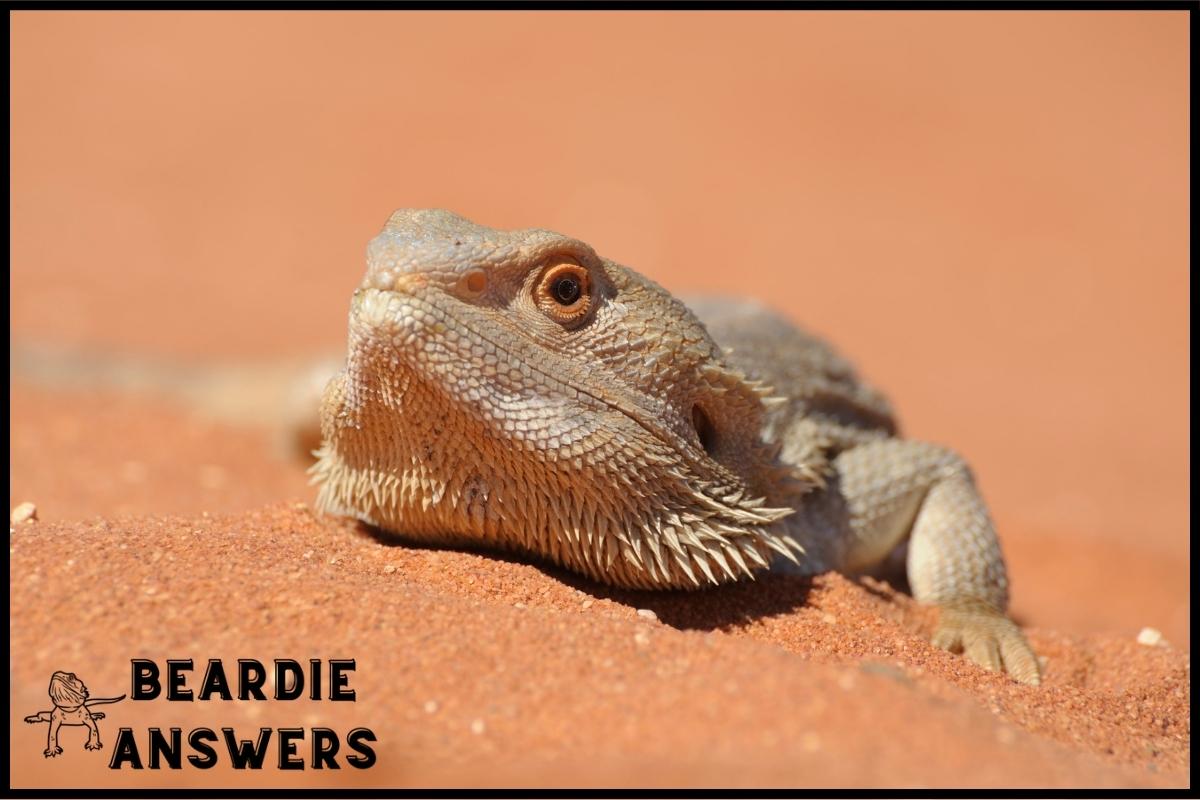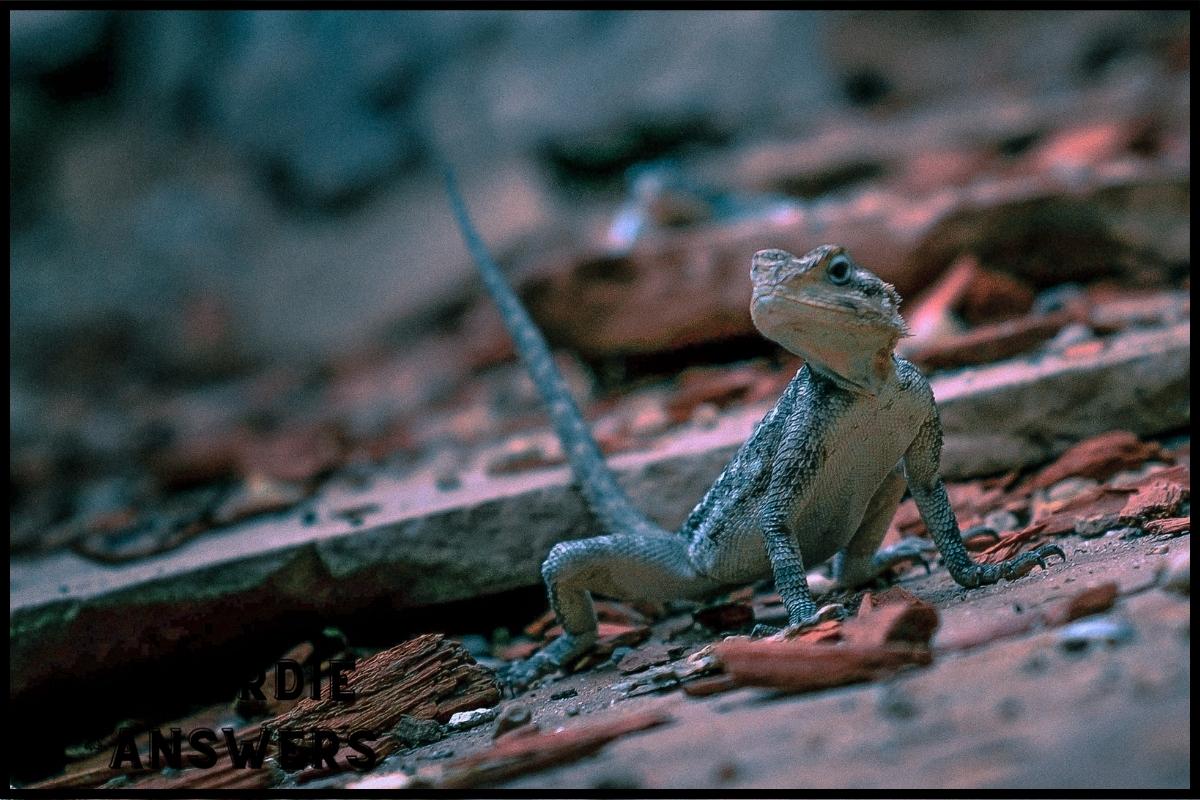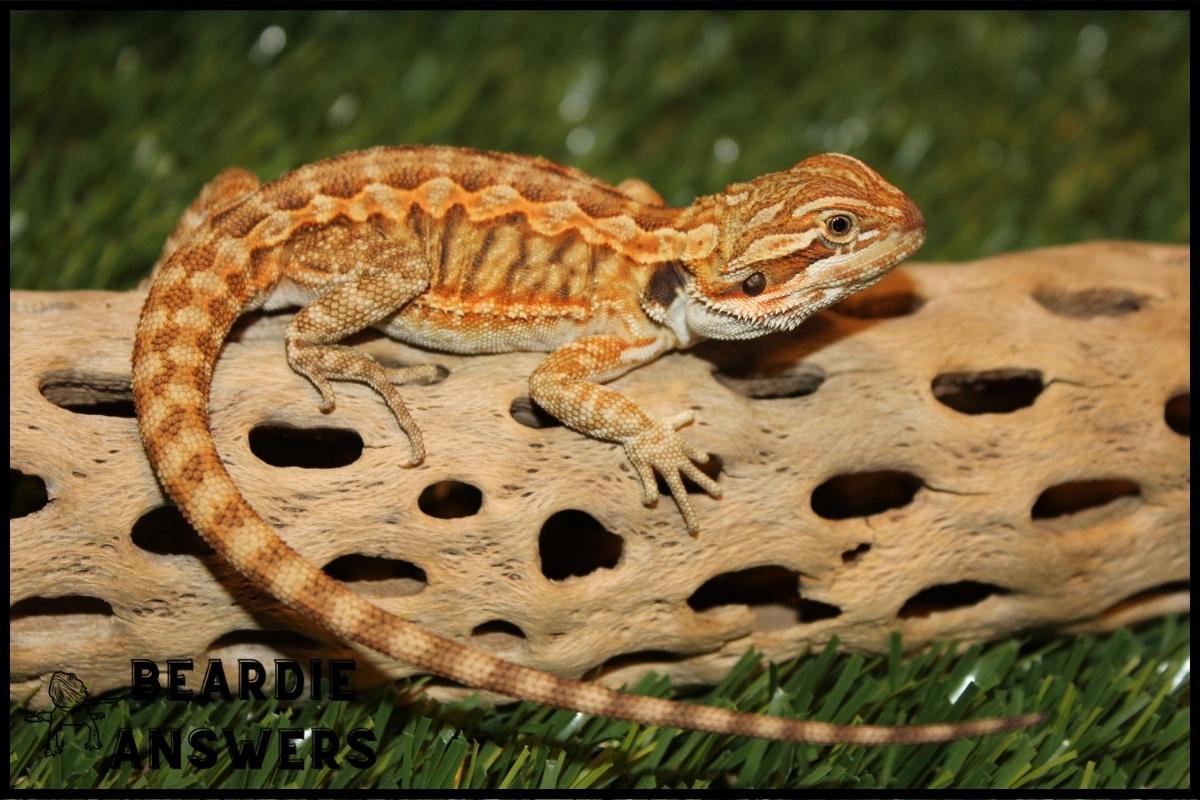Yes, bearded dragons are capable of seeing a range of colors. While their color vision may not be as vibrant as humans, they can distinguish between different colors and shades.
What You'll Learn
How Do Bearded Dragons See?
Bearded dragons possess a unique ability to see in both UV light and during the day. Unlike many other reptiles, they have developed daytime vision that helps them navigate their environment.
This special adaptation allows them to see colors as well, although not with the same clarity as humans do. Their eyes contain two types of cones: long-wavelength sensitive (LWS) and middle-wavelength sensitive (MWS).
The LWS cones allow bearded dragons to detect reds, oranges, yellows and greens while the MWS cones allow them to sense blues and violets. With these visual receptors, bearded dragons can distinguish between various shades of each color range.
This gives them an advantage over predators who may be limited by daylight or darkness when hunting prey. By being able to observe different hues, bearded dragons are better equipped to identify potential food sources or shelter quickly.
With this heightened perception of color, they are more likely to find what they need for survival in their natural habitat. From there we can explore what colors can bearded dragons see?
What Colors Can Bearded Dragons See?
Ah, the beauty of color. Our bearded dragons can appreciate it just like we do! They have a wide color spectrum that they can see and recognize in their environment – from bright greens to deep purples.
This is an important feature for them as they use colors to identify predators or potential prey. Take the example of green leaves on trees: bearded dragons must be able to differentiate between green, brown, yellow and red hues so they know which ones are safe and edible plants.
Meanwhile, if a dragon sees something with more vivid colors such as red or orange, this could signal danger and prompt them to retreat or hide until things cool off. So while we may take our ability to see color for granted, it’s clear why being able to perceive different shades is critical for our scaly friends too.
With this understanding in mind, let’s explore why does color perception matter for bearded dragons?
Why Does Color Perception Matter For Bearded Dragons?
Color perception is very important for bearded dragons. They rely on color to identify food, mates, and potential threats in the wild. Additionally, they use colors to enjoy enrichment activities or explore their surroundings. As a result, it’s essential that we provide our pet bearded dragons with an environment and stimuli that allow them to engage with colors as much as possible.
Light exposure plays a major role in how well bearded dragons can see colors; too little light can cause impairment of vision, while too much light can damage their eyesight even further. In order to ensure your bearded dragon’s visual health, you must make sure that the lighting levels are appropriate for its size and environment—not too dim or bright.
Providing adequate nutrition is also key when it comes to maintaining good eye health. A balanced diet containing vitamins A and C helps improve vision by promoting healthy pigmentation of the retinas. Furthermore, providing ample opportunities for physical activity will help keep your beardie active and alert which may contribute to better vision overall.
With these considerations in mind, you’ll be able to create an environment where your bearded dragon has full access to all its senses including sight – allowing it to live life fully!
How To Ensure Your Bearded Dragon’s Visual Health
Ensuring your bearded dragon’s visual health is an important part of caring for them. To make sure that they can see clearly and experience the best vision possible, here are some tips:
- Make sure to provide adequate lighting requirements. Bearded dragons need UVB light in order to synthesize vitamin D3, which helps with calcium absorption for healthy bones and eyesight. Keeping a consistent day/night cycle is also important for their overall well-being.
- Monitor diet choices carefully – it’s important to ensure that your pet gets enough nutrients such as vitamins A and C, Omega-3 fatty acids, zinc, and other minerals that help keep their vision sharp. Avoid overfeeding or feeding too much protein as this can lead to obesity, which has been linked to impaired vision in reptiles.
- Provide enrichment activities to stimulate mental activity. Try offering different objects like toys or branches so they have something interesting to look at throughout the day and night time periods. This will not only encourage exploration but also give them extra sensory stimulation which may further improve their vision capabilities.
Now that we’ve discussed how to ensure optimal visual health for your bearded dragon, let’s take a closer look at common eye issues in bearded dragons.
Common Eye Issues In Bearded Dragons
Let’s talk about cataracts and eye infections, two common eye issues in bearded dragons.
These issues can cause a lot of discomfort and can become serious if not treated properly.
Cataracts
Cataracts are one of the most common eye issues faced by bearded dragons, often leading to progressive blindness.
Not only do cataracts cause a great deal of pain and discomfort for these creatures, but they can also lead to permanent damage if not treated quickly.
Cataracts occur when proteins in the lens of their eyes clump together, resulting in cloudy vision or even complete blindness.
This type of cloudiness can sometimes be caused by eye strain from overexposure to bright light or UV radiation, making it important for owners to provide proper lighting to reduce the risk of developing cataracts.
With early diagnosis and treatment, however, this condition can be managed so that your dragon can live without worrying about its vision becoming progressively worse.
Eye Infections
In addition to cataracts, bearded dragons can also suffer from various types of eye infections due to their delicate eye anatomy. These infections are usually caused by bacterial or fungal contamination and if left untreated, they can lead to long-term damage and even vision loss.
To reduce the risk of infection, owners should make sure that their dragon’s enclosure is kept clean and dry at all times as well as providing them with a balanced diet full of essential nutrients that support healthy eye function. This includes plenty of leafy greens and vegetables along with an appropriate amount of proteins for growth and development.
With proper care, these creatures will be able to live happy lives without having to worry about developing any sort of eye issues in the future.
Tips For Enhancing Your Bearded Dragon’s Color Vision
The eyes of a bearded dragon are incredibly important: not only do they enable their vision, but also provide vital insight into their overall health and wellbeing. Unfortunately, eye issues can arise in these beloved reptiles if proper care is not taken.
Now that we have discussed common eye issues in bearded dragons, let us take the next step towards providing them with the best possible conditions for optimal color vision.
With a sprinkle of creativity like a pinch of fairy dust, one can create an environment where your pet’s visual experience will be nothing short of enchanting! Lighting adjustment and enrichment activities should be at the core of any plan to improve color recognition.
The key is to find a balance between illuminating and stimulating – both being essential ingredients for success. For example, you can adjust the light to mimic natural daylight hours or introduce new playthings such as blocks colored with non-toxic paint.
These types of activities help keep your reptile engaged while simultaneously stimulating its senses by teaching it how to distinguish colors more effectively.
By creating an environment tailored specifically to enhance their color vision, you will ensure that your furry friend remains healthy, happy and vibrant – all through life’s many shades!
Conclusion
Overall, bearded dragons have the ability to see color and recognizing this is important for their health. It’s vital that owners take care of their pet dragon’s eyesight by using appropriate lighting, avoiding vision-harming substances, and providing a varied diet.
By taking steps to keep your beardie healthy, you can help ensure they maintain sharp color perception and enjoy vibrant hues in their environment.
I’m sure if you give your beloved reptile the right conditions, they’ll be able to appreciate all the colors around them – just like us! Spending time with your scaly friend will only become more enjoyable as you observe how much pleasure they get from seeing different shades of green or red.

Hi! My name is Bryan, I am the “one behind the words” here are BeardieAnswers.com. I believe that providing quality care and nutrition is the best way to ensure the health of your pet. Every beardie is special and deserves the best care and attention. If you have questions about your bearded dragon, please don’t hesitate to ask! View My Full Author Page




